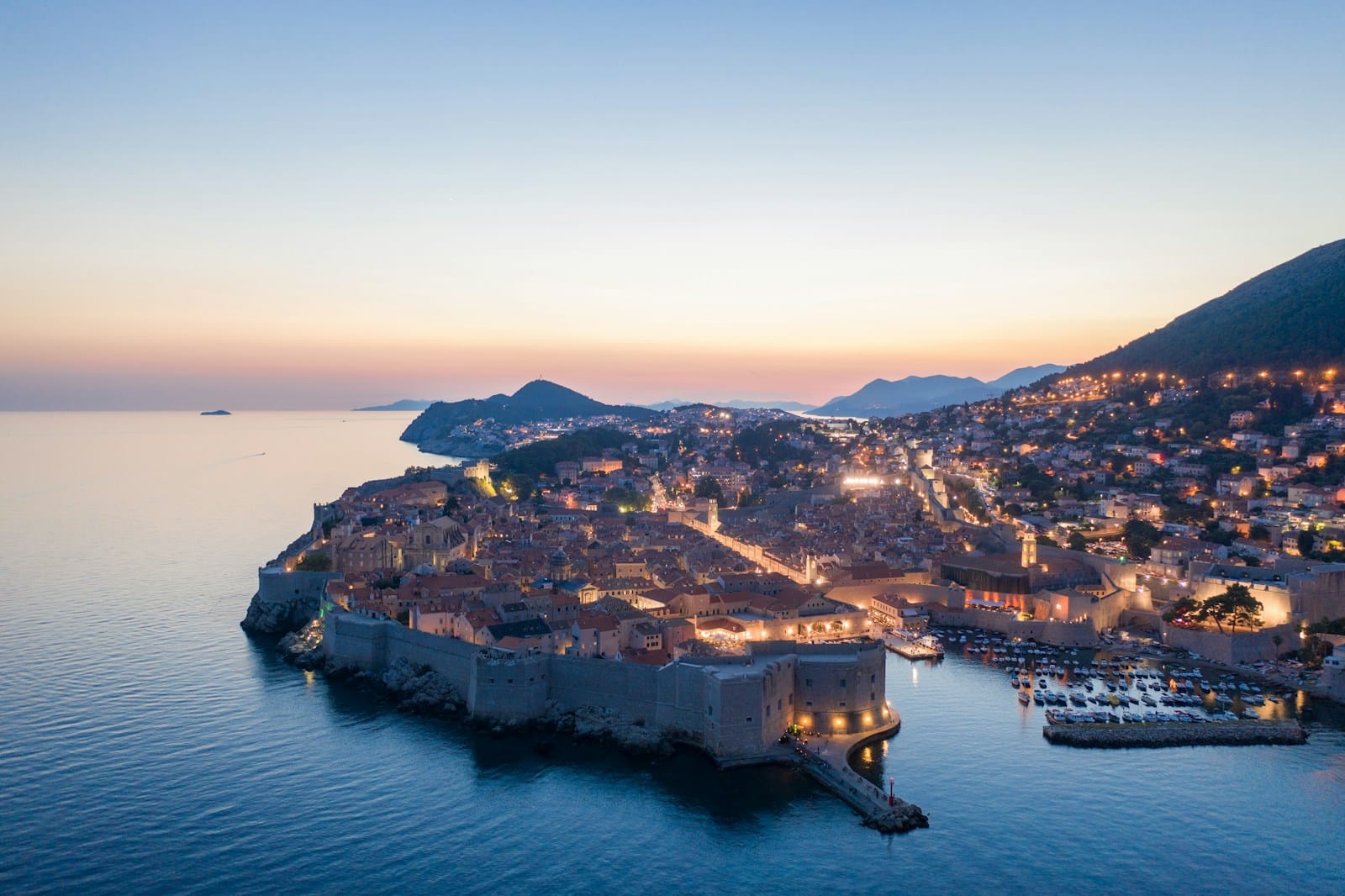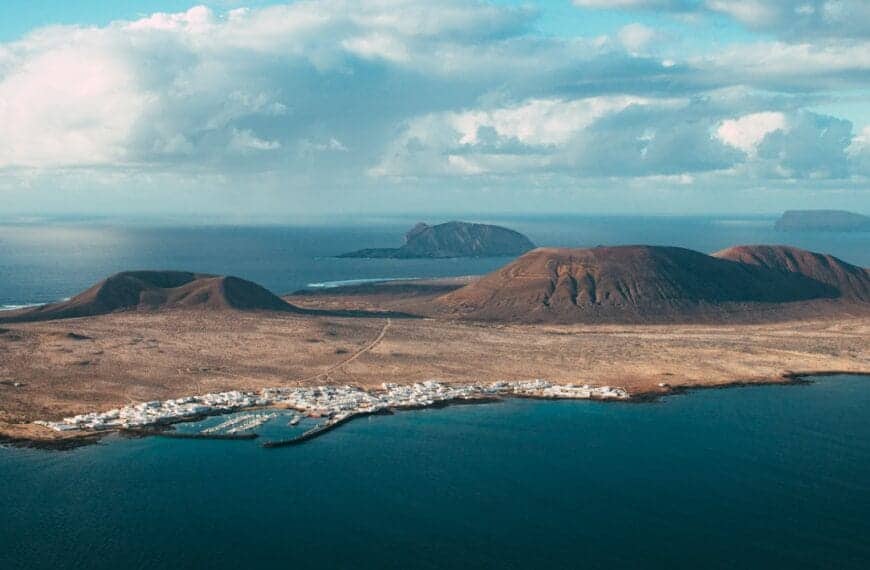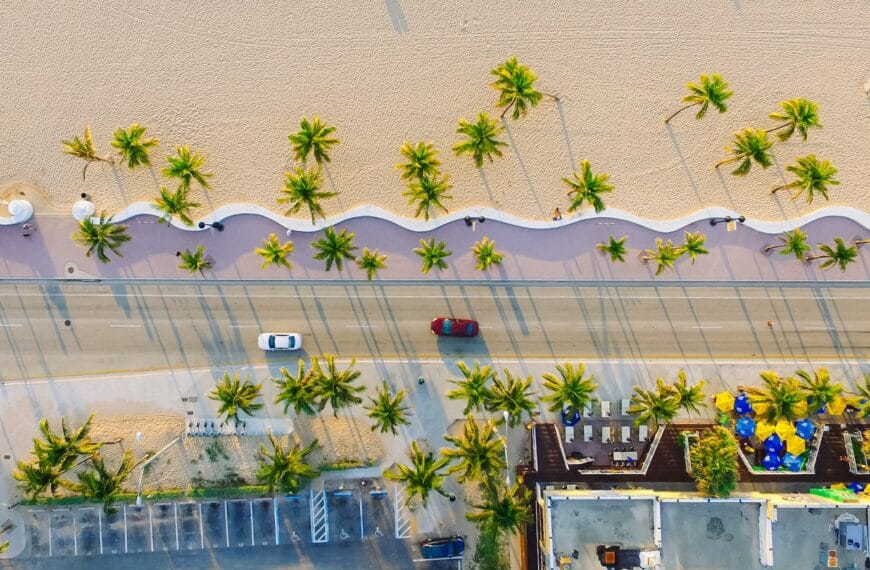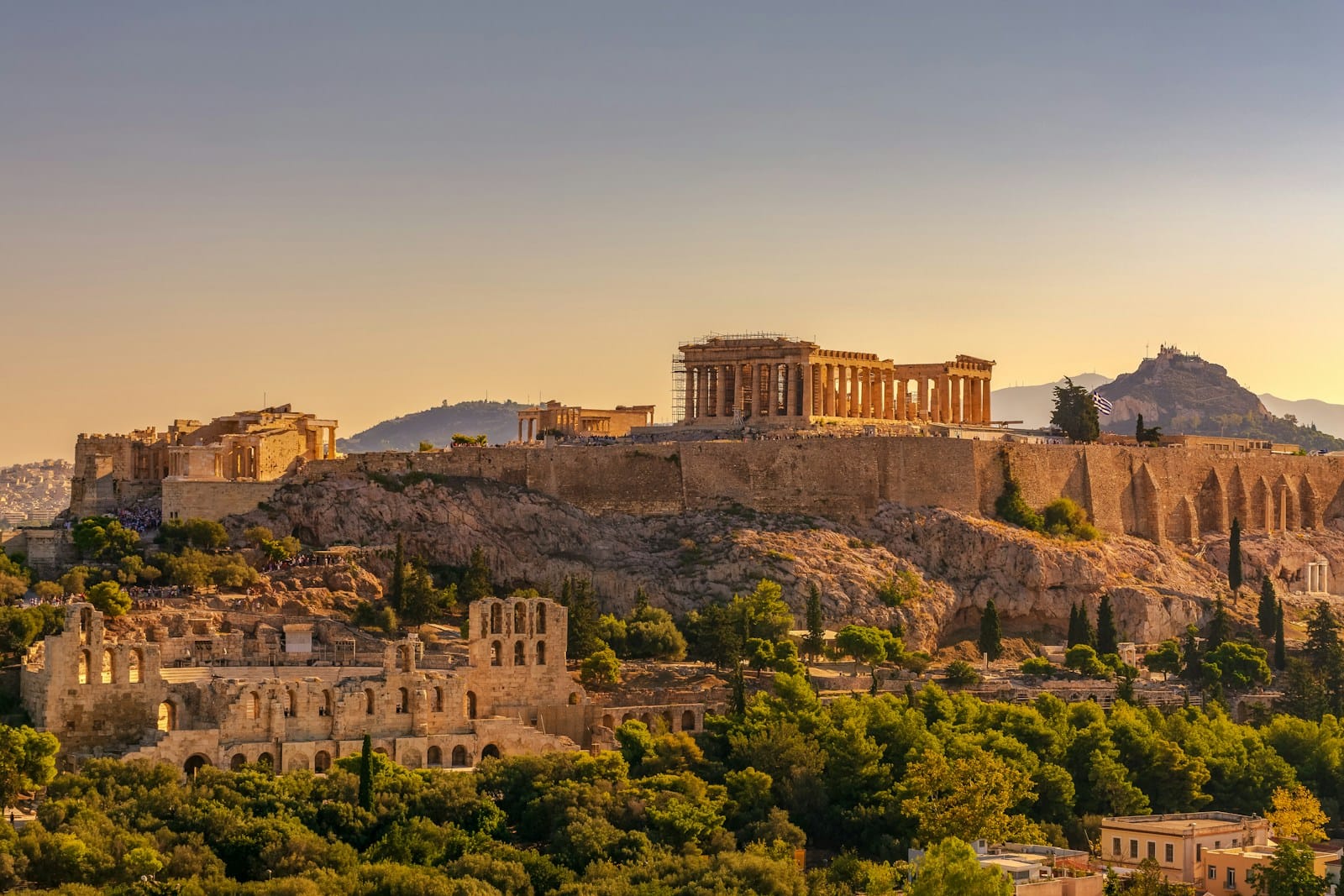Croatia Travel Guide: Coastlines, Castles & Culture
Intro to Croatia Travel Guide
Croatia is where turquoise Adriatic waters meet medieval towns, sun-drenched islands, and dramatic national parks. With Roman ruins, seaside vineyards, and Game of Thrones filming locations, it’s a country that blends natural beauty and history effortlessly.
Start planning your journey with our complete Croatia Travel Guide — including the best time to visit Croatia, travel cost insights, the top places to visit in Croatia, essential things to do in Croatia, and immersive Croatia tours to make your trip unforgettable.
Book immersive Croatia tours and experience unforgettable things to do in Croatia — from sacred temple rituals and highland treks to floating markets and lakeside food adventures.
Where to Go in Croatia
Dubrovnik | Hvar | Istria | Korčula | Krka National Park | Makarska | Plitvice Lakes National Park | Pula | Rovinj | Split | Trogir | Zagreb | Zadar
💡Quick Facts:
Destination: Croatia
Continent: Europe
Country: Croatia
Administrative Division: 20 counties (županije) + City of Zagreb
Area: 56,594 km² (21,851 mi²)
Population: ~3.83 million (2024 est.)
Density: ~68 people/km²
Capital: Zagreb
Regions/Subregions:
• Dalmatian Coast (Split, Dubrovnik, Zadar)
• Istria (Pula, Rovinj, Poreč)
• Kvarner (Rijeka, Opatija, Krk)
• Slavonia (Osijek, Vukovar, Đakovo)
• Central Croatia (Karlovac, Plitvice Lakes, Varaždin)
Official & Regional Languages: Croatian (official); Italian (Istria), Hungarian, Serbian (minority regions)
Currency: Euro (EUR)
Time Zone(s): Central European Time (CET, UTC+1); Central European Summer Time (CEST, UTC+2)
Airports:
• Zagreb Franjo Tuđman Airport (ZAG)
• Split Airport (SPU)
• Dubrovnik Airport (DBV)
• Zadar Airport (ZAD)
• Pula Airport (PUY)
Climate: Mediterranean along the coast; continental inland
Known For: Adriatic coastline, historic old towns (Dubrovnik, Split), UNESCO World Heritage Sites, national parks (Plitvice Lakes, Krka), island hopping
🛂Arrival Info:
• EU/Schengen nationals: ID card entry, no visa
• US, Canada, Australia, Japan: Visa-free up to 90 days
• ETIAS (Electronic Travel Authorization) mandatory from 2025
• Official visa portal: Visa Portal
• Customs info: Croatia Customs
💉Health Info:
• Recommended vaccines: Hepatitis A & B, Tetanus
• No major health outbreaks
• High-quality hospitals in Zagreb, Split, Rijeka
• English-speaking clinics in tourist hubs
• No malaria or terrain-specific health concerns
• Travel insurance strongly recommended
✅ Check travel insurance options for travel emergencies, delays, and medical needs abroad — Get coverage here
✅ Stay Informed with Official Updates: WHO – International Travel & Health | CDC – Travel health updates
🚨Travel Advisory:
• General Level 1: Exercise Normal Precautions
• Petty theft in crowded tourist spots
• Scams: Unofficial taxis, restaurant overcharging
• Peaceful protests occur occasionally in Zagreb
• LGBTQ+ travelers generally safe but local sensitivities exist
✅ Stay Informed with Official Updates: US Travel Advisory | UK Foreign Travel Advice
📅Holidays:
Independence Day: October 8
Statehood Day: May 30
Assumption of Mary: August 15
Christmas: December 25–26
Local festivals: Dubrovnik Summer Festival (July–August), Split Summer Festival
💰Visitor Info:
Euro currency; ATMs widely available
Credit cards accepted in urban/tourist areas
Cash preferred in small towns and islands
Tipping customary (5–10%)
Tourist tax: ~1.5 EUR per night per person
Budget travelers: €50–70/day
Midrange: €100–150/day
Luxury: €250+/day
✈️Airports:
ZAG – Zagreb: Main international hub
DBV – Dubrovnik: Ideal for southern Dalmatian Coast
SPU – Split: Serves central coast and islands
PUY – Pula: Best for Istria
ZAD – Zadar, RJK – Rijeka: Regional access for northern coast
Seasonal flights from across Europe increase during summer
✅ Delayed or canceled flight? Check if you’re eligible for compensation
🚍Transport:
• Buses: Reliable intercity network
• Trains: Limited, but scenic routes available
• Ferries: Extensive island connections (Jadrolinija, Krilo)
• Local taxis and Uber in major cities
• No metro systems; local buses within cities
• Driving: Right-hand side; IDP required for non-EU licenses
• Common scams: Fake ferry tickets, unmetered taxis
✅ Book reliable airport transfers and in-city rides in advance. Reserve your ride here
📶Connectivity:
SIM cards from A1, Hrvatski Telekom, Telemach available
eSIM packages widely offered
Airport kiosks and city shops for SIM purchases
Good 4G coverage nationwide, 5G in cities
Public Wi-Fi in cafes and hotels; caution advised
✅ Stay connected abroad with affordable eSIM data packs. Get your eSIM here
📜Laws & Etiquette:
Legal drinking age: 18
Smoking bans in public indoor spaces
Modest dress near churches and religious sites
Tipping expected in restaurants and taxis
Greet with a handshake; personal space respected
LGBTQ+ rights legally protected but be discreet in rural areas
Photography restrictions in military or government zones
🛡️Emergency Info:
• Emergency: 112 (all services)
• U.S. Embassy Zagreb
• UK Embassy Zagreb
• Tourist Police: Present in Dubrovnik, Split, Zagreb during peak season
✅ Use embassy locator tools: Embassies Worldwide
🌦️Weather:
Best time to visit: May–June and September–October
Summer (Jul–Aug): Hot, dry, crowded
Spring/Fall: Pleasant temps, fewer crowds
Winter: Cold inland, mild on the coast
Adriatic coast occasionally faces bora winds in winter
✅ Stay prepared—check the weather forecast for your destination — Weather Forecast
Croatia by Region – Where to Go
Explore Croatia’s diverse regions — from coastal gems and island escapes to inland castles and karst landscapes. Each offers its own charm, cuisine, and culture.
Dalmatian Coast
Split, Dubrovnik, Šibenik, Zadar, Makarska
- Split: Roman ruins meet modern cafes in this Adriatic hub; gateway to the islands.
- Dubrovnik: The “Pearl of the Adriatic,” famous for its old town walls and cinematic appeal.
- Zadar & Šibenik: Quieter coastal cities with sea organs, fortresses, and historic charm.
Istria
Pula, Rovinj, Poreč, Motovun
- Pula: Home to a stunning Roman amphitheater and seaside promenades.
- Rovinj: A Venetian-style port town with colorful houses and sunset views.
- Motovun: Hilltop village in wine and truffle country — perfect for food lovers.
Central Croatia
Zagreb, Karlovac, Samobor
- Zagreb: The capital city blends Austro-Hungarian elegance with a creative arts scene.
- Samobor: A storybook town famous for cream cakes and cobbled streets.
- Karlovac: Four rivers and star-shaped fortresses near the gateway to Plitvice.
Slavonia & Inland East
Osijek, Vukovar, Đakovo
- Osijek: Baroque architecture, wine cellars, and a slower pace along the Drava River.
- Vukovar: Historic and resilient, a place to understand Croatia’s modern history.
- Đakovo: Known for its Lipizzaner horses and red-brick cathedral.
Islands of Croatia
Hvar, Korčula, Brač, Vis, Mljet, Pag
- Hvar: Sun-soaked, stylish, and buzzing with beach clubs and lavender fields.
- Korčula: Alleged birthplace of Marco Polo with medieval charm.
- Vis: Remote and wild, ideal for boaters and nature lovers.
- Mljet: National park with saltwater lakes and quiet forest trails.
Top Places to Visit in Croatia
These are the most memorable places to visit in Croatia — from UNESCO sites to hidden coves and heritage towns.
Historic Cities & Cultural Hubs
- Dubrovnik: Walk the ancient walls, explore baroque churches, and soak in coastal drama.
- Split: Diocletian’s Palace forms the spine of this thriving city.
- Zagreb: Museums, street art, and café-lined squares in the capital.
Island Escapes
- Hvar: For sun, sailing, and swanky nights.
- Korčula: For old-world beauty and wine tasting.
- Mljet: For nature walks and peaceful lagoons.
Nature & National Parks
- Plitvice Lakes: Cascading waterfalls and turquoise pools.
- Krka National Park: Waterfalls you can swim beneath near Šibenik.
- Paklenica & Northern Velebit: Great for hiking and climbing.
Wine & Gastronomy Towns
- Motovun: Truffle hunts and hilltop restaurants.
- Pelješac Peninsula: Full-bodied reds and oysters by the bay.
- Istria’s inland villages: For olive oil, wine, and slow travel.
How to Choose Where to Go in Croatia
Whether you’re looking for beach breaks, cultural immersion, or national parks, Croatia has it all. This section helps you align your itinerary with your travel style.
- For History & Culture: Dubrovnik, Split, Pula, and Zagreb shine.
- For Islands & Beaches: Choose Hvar, Vis, Brač, or the Makarska Riviera.
- For Nature Lovers: Head to Plitvice, Krka, or Mljet.
- For Food & Wine: Explore Istria or Dalmatian coast vineyards.
- Efficient Pairings: Dubrovnik + Korčula + Split or Zagreb + Plitvice + Rovinj.
How to Get Around Croatia
Getting around Croatia is easy by bus, car, or ferry — and scenic too.
- Buses: Reliable and affordable between cities and coast.
- Ferries & Catamarans: Jadrolinija and Krilo connect islands and mainland.
- Rental Cars: Ideal for exploring Istria, Slavonia, or inland parks.
- Trains: Limited use; best for Zagreb-based routes.
- Domestic Flights: Zagreb–Dubrovnik and Split can save time during high season.
Travel Budget & Costs in Croatia
Understand the travel cost in Croatia based on your style — from shoestring to splurge.
- Budget: $40–60/day — hostels, bakeries, ferries
- Mid-Range: $80–150/day — guesthouses, car rentals, island hopping
- Luxury: $200–300/day — 4-star hotels, fine dining, private guides
Sample Costs:
- Museum entry: $5–10
- Island ferry: $6–25 depending on route
- Dinner for two with wine: ~$45
- 1-week car rental: ~$250
- National Park ticket: $10–35
Best Time to Visit Croatia
The best time to visit Croatia depends on your priorities — festivals, fewer crowds, or swimming weather.
- May–June: Ideal mix of warmth, sunshine, and low crowds.
- July–August: Peak season for beaches and festivals — but expect crowds and higher prices.
- September–October: Warm seas and grape harvests.
- Winter (Nov–March): Off-season for coastal regions; Zagreb has Christmas markets.
Must-See Experiences in Croatia
Don’t leave without trying these iconic things to do in Croatia — each offers a different flavor of the country.
- Walk Dubrovnik’s walls at sunset
- Sail the Dalmatian Islands on a catamaran
- Swim beneath waterfalls at Krka
- Join a truffle hunt in Istria
- Drink Dingač red wine on Pelješac
- Cycle around Mljet’s lakes
- Explore the Roman amphitheater in Pula
- Soak in the art and coffee culture of Zagreb
Book immersive Croatia tours and experience unforgettable things to do in Croatia — from sacred temple rituals and highland treks to floating markets and lakeside food adventures.
Best Travel Itineraries in Croatia
These curated itineraries help you experience Croatia based on time and interest.
Classic 10-Day Coastal Route
Dubrovnik → Korčula → Split → Zadar
- Great for first-timers with a focus on coast and culture.
7-Day Island Hopping Escape
Split → Hvar → Vis → Brač → Split
- Boats, beaches, and island life.
Nature & Wine (10 Days)
Zagreb → Plitvice → Motovun → Rovinj → Pula
- Inland adventure meets Istrian cuisine.
2-Week Grand Tour
Zagreb → Plitvice → Zadar → Split → Hvar → Dubrovnik
- Full-spectrum Croatia from parks to palaces.
Local Cuisine & Culinary Experiences
Food in Croatia varies regionally — from seafood to stews, truffles to olive oil.
What to Try
- Peka: Meat or octopus slow-cooked under a bell-shaped lid
- Black Risotto (Crni Rižot): Squid ink and rice by the coast
- Ćevapi: Balkan-style minced meat sausages
- Pašticada: Braised beef in rich red wine sauce
- Fuži with Truffle Cream: Istrian pasta at its finest
Culinary Highlights
- Wine tasting in Pelješac or Istria
- Truffle hunting near Motovun
- Food markets in Split and Zagreb
- Olive oil tastings in Dalmatia
Taste your way through Croatia with local cooking classes, vineyard tours, and slow-food dinners.
Travel Safety & Cultural Etiquette in Croatia
Croatia is one of the safest countries in Europe, but local norms matter.
- Tap water is safe, and healthcare is excellent.
- Tipping: 10% is appreciated, but not mandatory.
- Dress modestly in churches and monasteries.
- Avoid political debates about Yugoslav history.
- Beach attire is normal at the shore, not inland towns.
Where to Go Next – Pair Croatia with These Destinations
Croatia connects easily to several Balkan and Central European countries.
- Slovenia: Combine with Lake Bled and Ljubljana from Zagreb.
- Bosnia & Herzegovina: Visit Mostar or Sarajevo from Dubrovnik.
- Montenegro: Pair with Kotor or Budva for more Adriatic charm.
- Italy: Ferries from Istria or flights from Zagreb to Venice or Rome.
Explore more:
Final Planning Checklist for Croatia
- Plan ferry routes and rental car pickups around your regional route
- Book accommodation early in Dubrovnik and Hvar (they fill fast)
- Bring walking shoes for cobblestones and island hikes
- Download ferry schedules and parking maps offline
- Have cash for small towns — not all places accept cards
- Double-check park hours and fees — they vary seasonally
- Try at least one guided experience — wine tasting, sailing, or walking tour
- Be respectful in sacred or historic areas, especially war memorials
Explore Croatia with confidence using our trusted tips, local insights, and region-by-region planning tools.
For more expert travel tips, practical strategies, and trusted tools — visit our Homepage and get inspired for your next trip.










